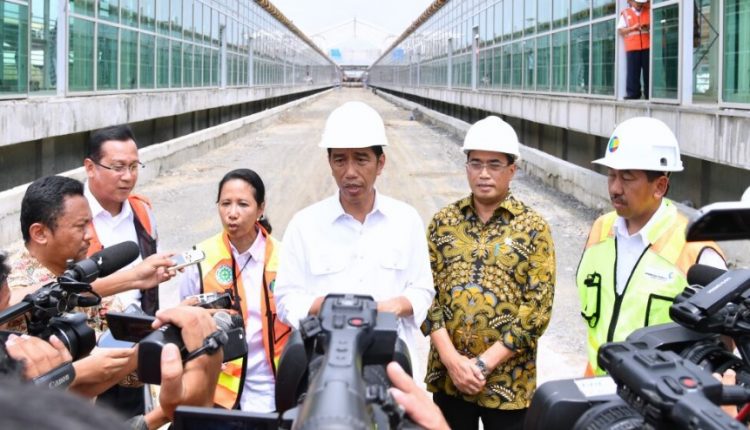Welcoming 2019, Take a Look at Government’s Economic Success
by; Surya Aji*
The 2018 will end in a few days, 2019 is a year where many people want to increasingly exist on the political stage to gain a variety of sympathies. Various expectations emerged, including hopes for an increasingly healthier economy. During the Jokowi era , of course there were many policies in terms of the economy which could be enjoyed equally for all people in Indonesia even to remote areas, one proof of which is the same fuel prices from Sabang to Merauke.
Even though it was hit by various issues, the economy in Indonesia will be disorganized, but the government continues to strive to improve the economic sector with various policies. One of the policies produced is the government’s efforts to simplify regulations and provide an efficient and easy business licensing platform. This is intended to make investment grow in Indonesia.
The regulation apparently received a positive response from your Moody’s Fitch Standard poor stating that Indonesia is an Investment-worthy country in 2018, where S & P last gave decent investment status in 1992. This was a positive impact from the government which continued to create economic policies to encourage Indonesia’s investment rating.
In March 2018 the percentage of poor people in urban areas dropped to 7.02%, compared to September 2017. The same thing happened in rural areas, where the poverty rate dropped from 13.47% in September 2017 to 13.20% per March 2018 This is the lowest poverty rate in history.
During 2018, the number of unemployed people in Indonesia was reduced by 140 thousand people, in line with the TPT which fell to 5.13 percent in February 2018. Employment also experienced an increase, especially in the sector of providing accommodation and drinking and processing industries.
One of the country’s assets is the wealth of knowledge, the strength of Indonesia in the economic sector must be directly proportional to the quality of educated human resources. BPS noted that the number of drop-out children in primary education decreased significantly, from 60,066 in 2016 fell to 32,127 in 2018.
The government has issued a policy related to the PIP Indonesia Pintar program, where with the program, the people who come from disadvantaged groups can complete 12-year compulsory education.
To facilitate PIP in receiving the benefits of education assistance, the Ministry of Education and Culture has collaborated with channel banks to facilitate school cooperatives with Financial Services without Smart Office.
Efforts to create equitable secondary education between the population of the economically weak and the well-off, and between the population in rural areas and those in urban areas also increasingly show positive results.
From the maritime sector, the government has provided Fisherman insurance protection services. In addition, the Development of Integrated Marine and Fisheries Centers (SPKT) is still being pushed to increase the center of new economic growth, especially in the coastal areas.
It is noted that Indonesia has 12 SKPT and 664,746 people or 66% of Fishermen already have Fishermen insurance cards. This certainly gives hope for Fishermen’s welfare.
In 2018 it was a breath of fresh air for MSME Micro Small and Medium Enterprises. The competitiveness of SMEs is expected to increase so that they are able to participate in formal business activities.
In Government Regulation No. 23 of 2018 concerning income tax from businesses which are taxed or obtained by taxpayers who have certain gross circulation, the government cuts the income tax on MSMEs from 1% to 0.5%. The existence of this policy will certainly give the spirit of UMKM to develop.
To facilitate businesses in obtaining credit / financing from Financial Institutions, the Government through the Coordinating Minister for Economic Affairs decided to reduce the KUR interest rate in 2018 from 9% effective per year to 7% effective interest per year.
The special KUR ceiling is set at Rp. 25 Million – Rp. 500 Million for each individual group member. Later the policy committee will set the KUR ceiling amount for 2018 for each KUR distributor, taking into account the recommendations of the Financial Services Authority (OJK).
At the end of 2018 Indonesia was able to create a new history in the economic sector. After a long time being a minority in share ownership in PT Freeport Indonesia, now the Government through PT Inalum has paid off a 51% majority stake that has been long awaited.
The capability of Ignasius Jonan, assisted by Finance Minister Sri Mulyani and Minister of Environment and Forestry (LHK) Siti Nurbaya, was able to see the gap in negotiations that made Mc Moran willing to release 51% of its shares in PT Freeport Indonesia to the Indonesian Government through PT Inalum.
These achievements certainly indicate that Indonesia is able to do a lot in the economic sector, this is certainly a good reflection to burn the optimism of economic actors in various sectors to continue working.
) * The author is an Economic Observer
